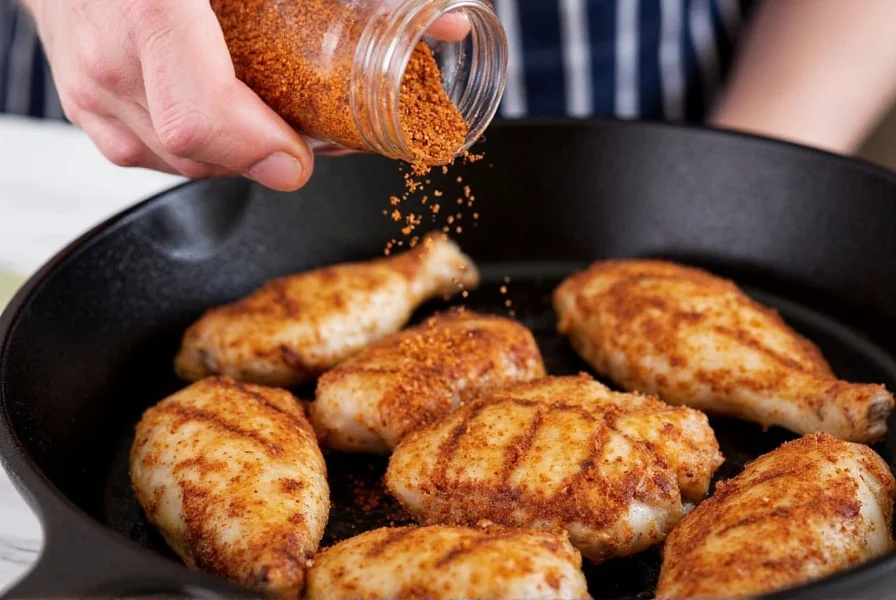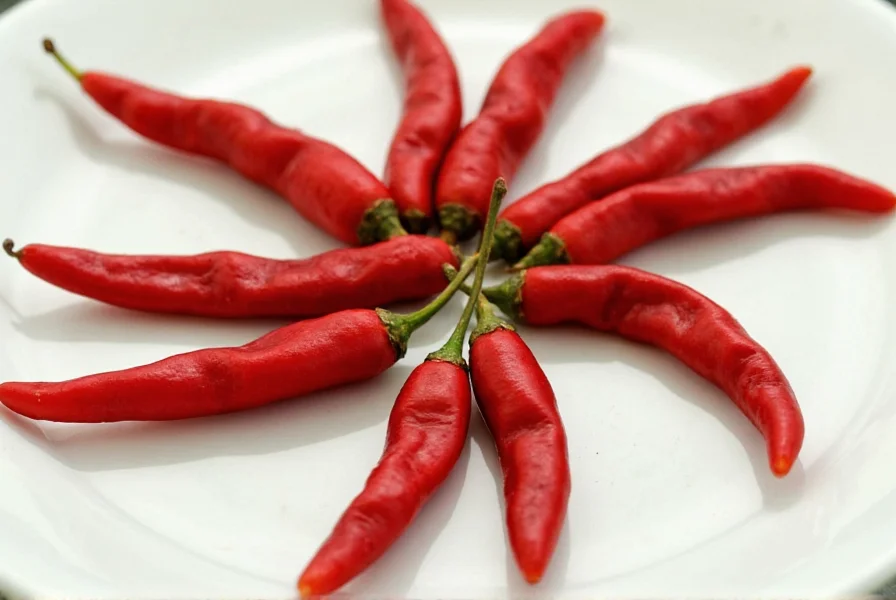Many home cooks and food enthusiasts mistakenly believe Cajun pepper refers to a specific chili variety. In reality, it's a signature seasoning blend that forms the flavor foundation of Cajun cooking traditions developed by French-speaking Acadians who settled in Louisiana. This versatile mix delivers a complex flavor profile balancing heat, earthiness, and aromatic depth rather than focusing solely on spiciness.
The Origins of Cajun Seasoning
Cajun seasoning emerged from the culinary traditions of Acadian refugees who settled in rural Louisiana after being expelled from Canada in the 18th century. These resourceful cooks developed distinctive flavor profiles using available ingredients, creating what we now recognize as Cajun cuisine. Unlike commercial blends found in supermarkets today, traditional Cajun seasoning was made in home kitchens with freshly ground spices tailored to personal preference.

Core Ingredients in Authentic Cajun Pepper Blend
While recipes vary by family and region, authentic Cajun seasoning contains these essential components:
| Ingredient | Percentage | Flavor Contribution |
|---|---|---|
| Paprika | 30-40% | Earthy base, color, mild sweetness |
| Cayenne Pepper | 15-25% | Primary heat source |
| Garlic Powder | 10-15% | Savory depth, aromatic quality |
| Onion Powder | 10-15% | Sweetness, complexity |
| Black Pepper | 5-10% | Sharp heat, pungency |
| Oregano & Thyme | 5-10% | Herbal notes, earthiness |
Understanding the Flavor Profile
Cajun seasoning delivers a complex flavor experience that goes beyond simple heat. The paprika provides earthy sweetness while cayenne contributes noticeable but manageable spiciness (typically 4-6 on a 10-point heat scale). Garlic and onion powders add savory depth, and the herbal components create aromatic complexity. Unlike many commercial blends that overemphasize salt, traditional Cajun seasoning contains minimal sodium, allowing the natural spice flavors to shine.
Cajun vs. Creole Seasoning: Clearing the Confusion
Many people use "Cajun pepper" and "Creole seasoning" interchangeably, but these blends have distinct characteristics:
- Cajun seasoning typically contains more cayenne for increased heat and less emphasis on herbs. It originated in rural Louisiana communities and features bolder, spicier profiles.
- Creole seasoning incorporates more herbs like oregano and thyme, with tomatoes and citrus notes reflecting New Orleans' cosmopolitan influences. It generally has a more balanced, less fiery profile.
This distinction matters when following authentic recipes—substituting one for the other can significantly alter the intended flavor profile of traditional dishes.
Practical Applications in Cooking
Cajun seasoning shines in numerous culinary applications beyond its traditional use in gumbo and jambalaya. Professional chefs recommend these techniques for maximizing flavor impact:
- Rubbed generously on proteins before searing or grilling
- Added to oil when starting soups or stews to bloom flavors
- Mixed with mayonnaise for instant Cajun aioli
- Shaken into popcorn or roasted nuts for spicy snacks
- Stirred into Bloody Mary cocktails for authentic Louisiana flavor
When using store-bought blends, check the ingredient list for excessive fillers like maltodextrin or artificial additives that diminish authentic flavor. The best blends list only whole spices without anti-caking agents.

Creating Authentic Homemade Cajun Seasoning
Commercial blends often contain unnecessary additives. Making your own ensures freshness and customization. Here's a professional chef-approved recipe:
Classic Homemade Cajun Seasoning
Makes approximately 1 cup
- 3 tablespoons paprika (preferably smoked)
- 2 tablespoons garlic powder
- 2 tablespoons onion powder
- 1.5 tablespoons cayenne pepper
- 1 tablespoon freshly ground black pepper
- 1 tablespoon dried oregano
- 1 tablespoon dried thyme
- 1 teaspoon white pepper (optional for additional heat)
- 1 teaspoon celery seed (optional for complexity)
Mix all ingredients thoroughly in a glass bowl, then transfer to an airtight container. For optimal flavor, let the blend rest for 48 hours before use to allow flavors to meld. Store in a cool, dark place for up to 6 months.
Storage and Freshness Tips
Spice blends lose potency over time. To maintain maximum flavor:
- Store in amber glass containers away from light
- Keep away from heat sources like stoves or ovens
- Replace commercial blends every 6 months
- Grind whole spices yourself when possible for superior freshness
- Never store spices above the stove where heat degrades quality
Freshly made Cajun seasoning should have a vibrant aroma—if the scent is faint or musty, it's time to replace your blend.
Addressing Common Misconceptions
Several myths persist about Cajun seasoning that affect how people use it:
- Myth: All Cajun seasoning is extremely hot
Reality: Traditional blends offer balanced heat—the cayenne content is moderate compared to dedicated hot sauces - Myth: Cajun and blackening seasonings are identical
Reality: Blackening blends contain more salt and paprika specifically for the blackening cooking technique - Myth: Commercial blends match authentic flavors
Reality: Many contain fillers and excessive salt that mask true Cajun flavor profiles
Frequently Asked Questions
Is Cajun pepper actually a type of chili pepper?
No, Cajun pepper is not a single pepper variety but a spice blend. Despite the name, it contains multiple spices including paprika, cayenne, garlic powder, and herbs, with no single 'pepper' as the primary ingredient.
What's the difference between Cajun and Creole seasoning?
Cajun seasoning typically contains more cayenne for increased heat and less emphasis on herbs, originating from rural Louisiana. Creole seasoning incorporates more herbs like oregano and thyme with tomatoes and citrus notes, reflecting New Orleans' cosmopolitan influences and generally having a more balanced, less fiery profile.
How spicy is authentic Cajun seasoning?
Authentic Cajun seasoning typically rates 4-6 on a 10-point heat scale. The heat comes primarily from cayenne pepper, but traditional blends balance this with paprika's earthiness and herbal notes rather than focusing solely on spiciness.
Can I make Cajun seasoning without cayenne pepper?
While possible, omitting cayenne significantly alters the authentic flavor profile. For milder versions, reduce cayenne quantity rather than eliminating it completely. Substitute options include paprika with a pinch of red pepper flakes for similar flavor with less intense heat.
How should I store homemade Cajun seasoning for maximum freshness?
Store in an airtight amber glass container away from light and heat sources. Properly stored, homemade blends maintain peak flavor for 6 months. Avoid storing above stoves or in clear containers exposed to light, which degrades spice quality rapidly.











 浙公网安备
33010002000092号
浙公网安备
33010002000092号 浙B2-20120091-4
浙B2-20120091-4